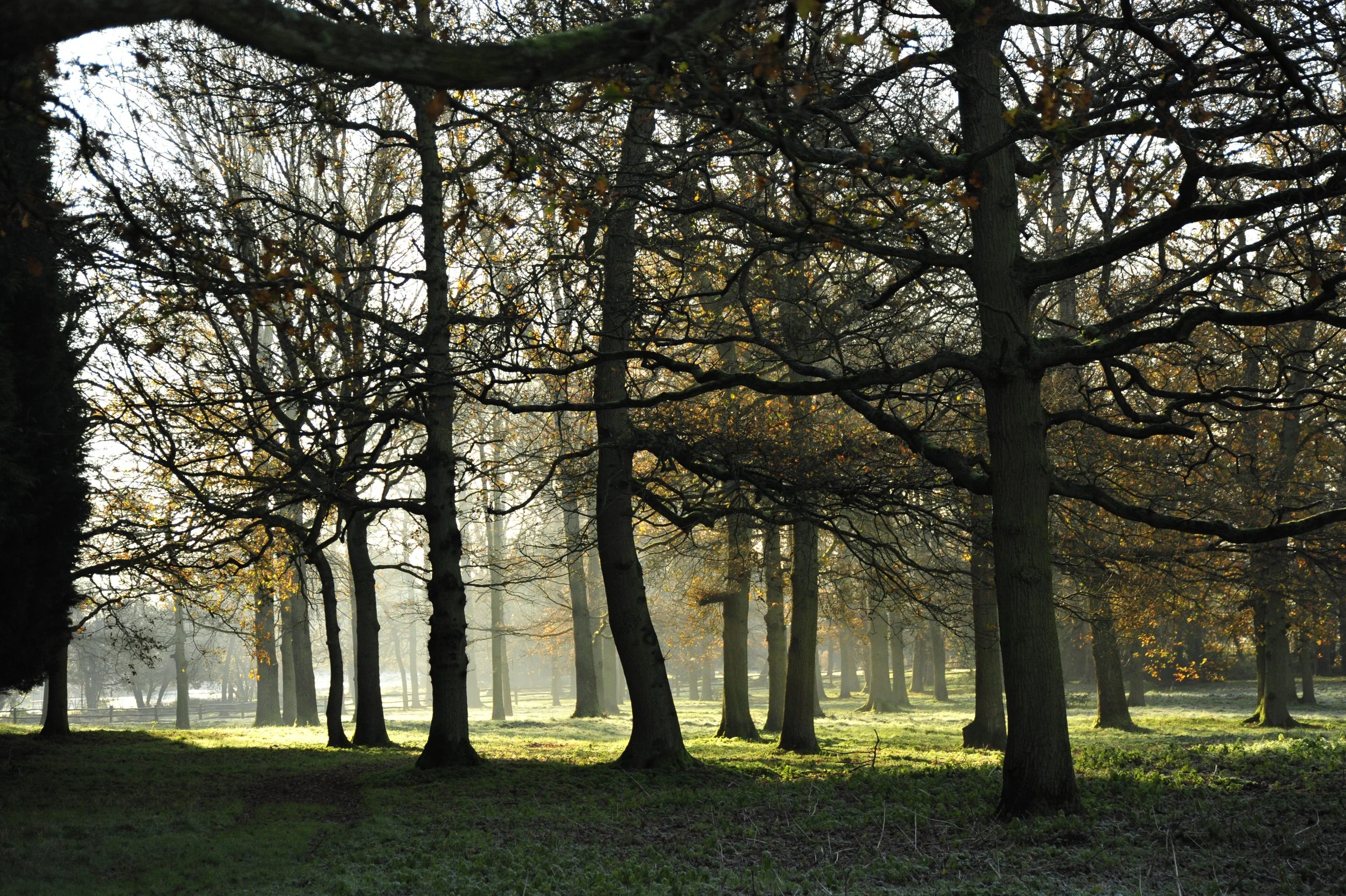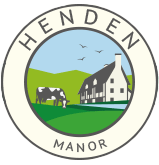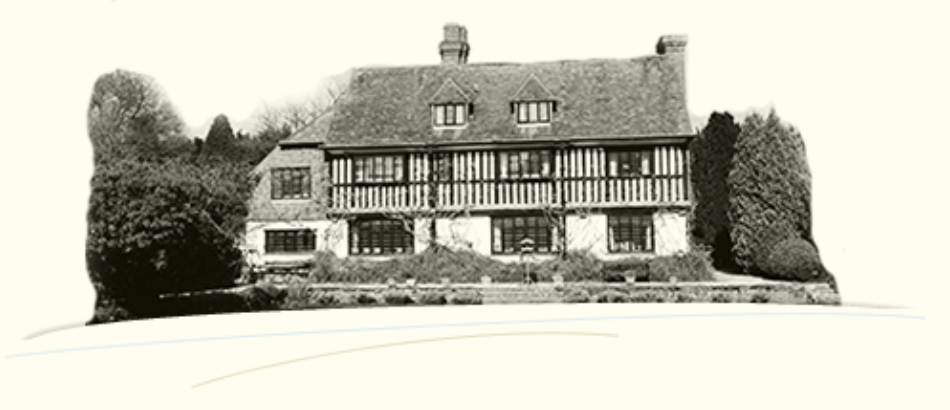
THE HISTORY OF HENDEN
The History of Henden
Henden is one of the oldest estates in the Ide Hill area, an area which was originally called Edythshill. It probably started life over a thousand years ago as a clearing in the forest that lay over the land. In time the farm became part of the Manor of Sundridge, a more important village lying to the north of Ide Hill. This was short-lived, however, and Henden soon became an independent Manor.
Edward Hasted, who wrote a History of Kent in 1797, describes Henden as formerly being “a member of the manor of Broughton Aluph” in Kent. This suggests an old feudal connection, which possibly dated back to the Norman period.
The current manor house was probably built in the 15th Century, we believe around 1490 maybe a little earlier. It is a moated house, which has subsequently been extended and altered. Historical records, however, indicate that Henden, also at the time called Hethenden, was recognised as a manor “in ancient writings”. Edward Hasted noted that the estate had owners of “very high rank” dating back to at least the mid 13th century. It was gifted for services to the Crown through to the late 15th century. This period spanned the reigns of the Plantagenet Kings namely Henry III (1216-72). Edward I (1272-1307), Edward II (1307-27), Edward III (1327-1377) and Richard II (1377-1399), Henry VIII (1509-47); the Lancastrian Kings namely Henry IV (1399-1413), Henry V (1413-22) and Henry VI (1422-61); the York Kings of Edward IV (1461-70 and 1471-83), Edward V (1483) and Richard III (1483-85); and the start of the Tudor dynasty including Henry VII (1485-1509) and Henry VIII (1509-47) .
For instance, Bartholomew de Burghersh owned Henden until he died in 1355. Burghersh held many positions including locally, the constable of Dover Castle and Warden of the Cinque Parts. More broadly, in 1337 King Edward III made him Admiral of the Fleet from the mouth of the Thames westward, Constable of the Tower of London and Lord Chamberlain of the Household. Such ownership by a prominent noble family strongly implies that there was a manorial dwelling on the site of Henden during this Medieval period.
After Burghersh died Henden came into the possession of the Despencer family through Burghersh’s wife marrying into the family. By the late 14th century, the estate was held by Thomas, Lord Despenser (the Earl of Gloucester) and then by his daughter Isabel. Through her marriages the estate became linked to the Beauchamp family and eventually to Richard Neville, the 15th Century Earl of Warwick, famously known as “the Kingmaker”. Neville’s widow (Anne, the Countess of Warwick) ultimately forfeited the family estates including “the manor of Henden” to the Crown in 1487, early in Henry VII’s reign. Thereafter through to the early 16th century the manor was described in country records as a Royal Manor.
It is believed that during the time of ownership under the Burghersh and Despencers the moat was dug around the Manor House for status, drainage and/or defence.
In 1518, Henry VIII exchanged Henden Manor “and a Park” with Sir Thomas Boleyn for his Newhall Manor in Essex. This transaction brought the estate into the ownership of the Boleyn family. The mention of “a Park” implies that Henden had a designated deer park with boundaries, although historical records show that Henden was “disparked” by the mid 16th century.
Boleyn’s daughter Ann was beheaded in 1536 and Sir Thomas died in 1539. With Sir Thomas’s passing the estate passed to Mary Boleyn and her second husband, Sir William Stafford. Stafford’s marriage to Mary in 1534 had, however, angered both Henry VIII and, at the time, Ann. In 1541, Henry VIII compelled Stafford and Mary to exchange Henden Manor and its estate for lands in Yorkshire. Henden, therefore, came once again under the possession of the Crown.
In 1543, Henry VIII granted the Manor to Sir John Gresham in recognition of his services Gresham was a member of the Royal Household from 1527 to 1550. He was a highly successful merchant and financier, who also acted as an agent for Cardinal Wolsey. Using his wealth Gresham bought the manors of Titsey, Tatsfield, Westerham and Lingfield, all reasonably close to Henden. He also owned estates in Norfolk and Buckinghamshire. In 1571, Gresham founded the Royal Exchange in London to act as a centre of commerce for the City of London. Sir Thomas died in 1556, but Henden continued to be owned by his family through to 1590.
In 1590, during the reign of Queen Elizabeth I, Charles Hoskins, who owned the Barrow Green Estate in Oxted, bought the Manor and estate. The Hoskins retained the estate for over two centuries. Upon the deaths of Susannah Hoskins in 1798 and of her husband in 1806, the Estate passed to her aunt, Katharine, widow of the Reverend Leigh Master of Newhall, Lancashire and thereafter descending to the Hoskins-Master family. In late 1926, Charles Hoskins Master sold Henden to the Barrow Green Estate Company.
Over the period 1933 to 1937, Henden and its estate was leased to Sir Michael Balcon. Balcon was a good friend of Alfred Hitchcock and so while he leased Henden, Hitchcock became a frequent visitor. It was during this time that Balcon, who was head of Production as Gaumont British Pictures, played a key role in assigning or approving the films Hitchcock directed, namely: the Man Who Knew Too much (1934); the 39 Steps (1935); Secret Agent (1936); Sabotage (1936); and Young and Innocent (1937). In 1938 after he had left Henden, Balcon took over the Ealing film studios from Will Barker and began to release films under the Ealing flag, so starting what many regard as the golden age for the Studio.
In 1937, when Balcon still held the lease, the Estate was put up for sale and was bought by Robert Spear Hudson MP, later Viscount Hudson. In 1940, Hudson became the Agriculture Minister in Sir Winston Churchill’s government. Sir Winston Churchill’s home, Chartwell, lies 1.8 miles to the north west as the crow flies..
In 1939, Hudson sold the Manor and estate to Geoffrey Philcox. According to Mr. Philcox, the farm was then in a derelict condition, although the house had a noted Italianate Garden. Sadly, this was dug up during the period of the Second World War as part of the “Dig for Victory” campaign..
In 1978, Philcox sold the estate to Ronald J. Scott, who at considerable expense fully restored the house and moat, adding a swimming pool and garage complex as well as some greenhouses and a tennis court. Scott was an interesting person. he was a successful financier and in 1973 was posted to the UAE by the UK Government. In the UAE he played a pivotal role in establishing the Currency Board, which was designed to manage the country’s current and reserves. He managed the introduction of the UAE currency, the Dirham, so replacing the Bahraini Dinar and the Qatari Riyal in the country. At the end of 1980 the Currency Board was transformed into the Central Bank of the UAE.
In 1992, Scott sold the house to Roger Sparks a property developer, who in 1993 sold Keeper’s Cottage on the estate. In June 1997, Sparks sold the estate to my wife and I. We loved the place upon first site, but in truth could not afford it at the time. Despite that we borrowed heavily to fund the purchase, thinking that perhaps we might be able to live at Henden for three years or so. As it so happens we were lucky in business not associated with the estate that we are still here some 28 years on. We pinch ourselves every morning when we get up and fully understand the privilege of being the custodians of such a beautiful and peaceful place, which one day will pass on to someone else.
In 2003, we sold the Lodge on Ide Hill Road in 2003, but later increased the acreage of the estate by buying three large fields to the north of the estate and a smaller field to the far south in 2008. The larger fields had been part of the estate previously, but had been sold to a neighbouring farmer in 1976. It was right to buy them back in. In 2013, we bought a further 18 acres of land within quarter of a mile of the Estate so as to have more acreage on which we could grow food for the cows that we had at the time. Today, we own some 503 acres and every year invest in improving the environment so that the rage of flora and fauna increases.
In 2009/10 we invested heavily in expanding and improving the dairy farm facilities. We built three new large livestock barns, a large grain store, an expanded food clamp area, where we stored our cut grass and maize and a large slurry lagoon to store the valuable wastewater coming from the cows when in the barns and the barns areas generally. In the drier seasons we would spread this rich liquid over our land to help fertilise it. Sadly, in spite of this investment we still could not make a sustainable business out of the dairy operation and so closed it in 2019.
In 2021/22, we redeveloped the livestock barns so that they could become high quality storage areas for film props. Since mid 2021, we have stored props for over 15 films, something we are proud of. This business supports our work on improving the environment and wildlife as well as covering losses on our arable business should we have them (usually because of poor weather conditions through the seasons).
As for our home, the Manor and its large gardens, we have upgraded the facilities here and there, although the quality of the work that Scott invested in the Manor remains largely untouched. In 2014, we dredged the moat finding along the way an onion bottle, which dates back to around 1700. In 2021, we built a new glasshouse in the garden in order for my wife to expand her successful gardening activities.
So, after close to 28 years of living on this historical estate we still pinch ourselves every day appreciating how lucky we have been. We are not of the same standing as many of the previous owners were, but fully understand the privilege of being the custodians of such a beautiful and peaceful place, which one day will pass on to someone else.


